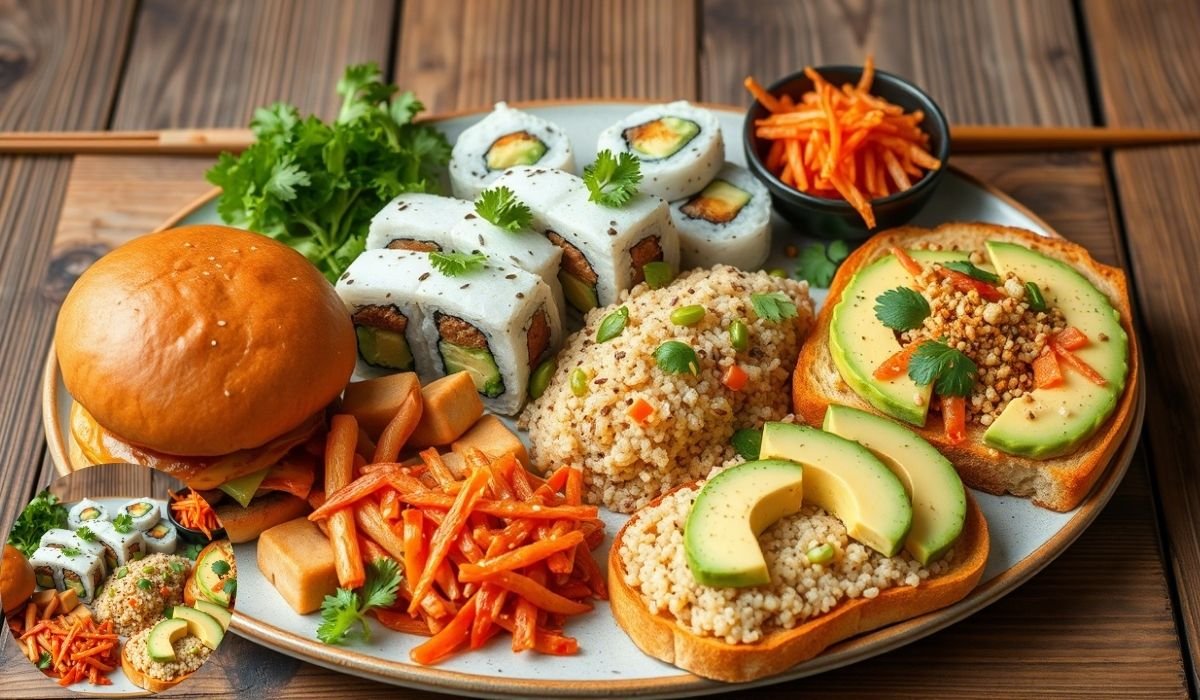Food
Food Trends Jalbiteblog: What’s On Your Plate?

Food is more than sustenance. It’s a reflection of culture, innovation, and global awareness. At Jalbiteblog, we stay at the forefront of culinary evolution, tracking the changes that shape how and what we eat. From plant-powered dishes to sustainable practices, this guide explores the most compelling food trends Jalbiteblog that are redefining dining in 2025 and beyond.
What Drives Food Trends?
Food trends are shaped by a dynamic mix of creativity, technology, and social behavior. Here’s what influences the latest waves in what ends up on our plates:
Chef-Driven Innovation: Influential chefs often experiment with lesser-known ingredients and cutting-edge techniques, setting trends that ripple from fine dining to home kitchens.
Globalization & Cultural Exchange: As travel and media connect the world, so do culinary traditions. The flavors of West Africa or the street foods of Southeast Asia now find a home on menus worldwide.
Health and Wellness Priorities: Nutrition plays a central role. People are choosing foods that support their mental and physical health—whether that’s reducing sugar, embracing plant-based meals, or seeking gut-friendly ingredients.
Environmental Concerns: Climate change and resource sustainability are driving people to seek foods with a lower ecological footprint.
Social Media Trends: Platforms like Instagram and TikTok amplify food aesthetics and ideas. A single viral post can create a nationwide craving overnight.
Key Food Trends to Watch in 2025
Let’s dig into the trends that are defining the culinary world this year.
Plant-Based Power: Beyond the Burger
The plant-based revolution is evolving. What began with soy burgers and almond milk has grown into a sophisticated movement exploring diverse sources of flavor and texture.
Mushrooms as Stars: Varieties like lion’s mane and oyster mushrooms are being used in everything from tacos to faux pulled pork. Their meat-like texture and umami punch make them ideal for plant-forward dishes.
Legume Renaissance: Chickpeas, black beans, and lentils are being reimagined. Chefs are serving up lentil ragú, chickpea-based pastas, and even bean-based desserts.
Fermented Vegetables: Once niche, now mainstream. Kimchi, sauerkraut, and fermented radishes are featured in grain bowls, sandwiches, and even fine dining menus.
These ingredients aren’t just healthy—they’re deeply flavorful, versatile, and good for the planet.
Sustainability on the Menu
Eating responsibly is no longer a fringe concept. Sustainability is becoming the norm, with consumers asking where their food comes from and how it’s produced.
Local & Seasonal Sourcing: Supporting regional farmers cuts down on transportation emissions and offers fresher ingredients. Seasonal menus are now a point of pride in many restaurants.
Regenerative Agriculture: This practice goes beyond organic. It restores soil health, sequesters carbon, and supports ecosystems. Expect to see more producers promoting regenerative practices on their packaging.
Reducing Food Waste: Innovative chefs are turning food scraps into gourmet ingredients. Carrot tops become pesto, stale bread turns into croutons, and even watermelon rinds find new purpose.
The sustainable food movement encourages a connection between plate and planet—and diners are here for it.
Global Flavors Making Waves
Culinary curiosity is growing. People are eager to explore the tastes of the world from their own kitchens or favorite restaurants.
West African Cuisine: With rich, complex spices and bold stews, dishes like jollof rice, egusi soup, and suya skewers are capturing global attention.
Southeast Asian Comforts: Beyond pho and pad thai, dishes like laksa, nasi goreng, and Filipino adobo are gaining visibility.
Mediterranean Mezze: Tapenade, hummus, dolmas, and labneh are being embraced for their health benefits and communal dining appeal.
These global dishes bring warmth, storytelling, and heritage to every bite.
Functional Foods: Eating With Purpose
Food that nourishes the body while promoting long-term health is a top priority for many in 2025.
Adaptogens: These natural substances—like ashwagandha, maca, and reishi mushrooms—are being added to teas, smoothies, and snacks for their stress-reducing properties.
Gut Health Superstars: Probiotic foods (e.g., kefir, yogurt, kimchi) and prebiotics (like garlic, leeks, and bananas) are being emphasized for supporting digestion and immunity.
Antioxidant-Rich Ingredients: Think blueberries, matcha, and dark chocolate. These foods are sought after for their role in fighting inflammation and boosting cellular health.
Wellness and flavor are no longer at odds. Functional foods prove you can have both.
How Jalbiteblog Tracks and Shapes Food Trends
At Jalbiteblog, we believe food is a story worth telling. Our mission is to track emerging food trends with a focus on authenticity, sustainability, and inclusivity. We explore:
Recipe Innovation: Showcasing original dishes that reflect modern tastes and timeless techniques.
Cultural Spotlights: Featuring chefs and home cooks from around the world who bring their heritage to life through food.
Industry Insights: Breaking down complex topics like agricultural policy, food tech, and culinary entrepreneurship.
By combining deep research with real-world tastings and interviews, we aim to be your trusted guide in the ever-changing food landscape.
Looking Ahead: The Future of Food
As we peer into the next few years, certain themes are likely to dominate:
Tech-Driven Cuisine: Expect to see more AI in recipe development, robotic cooking assistants, and lab-grown meat in the mainstream.
Climate-Resilient Crops: Millets, sorghum, and seaweed are being cultivated for their ability to thrive in changing environments.
Hyper-Personalized Nutrition: Advances in health tech may soon allow diets tailored to your DNA and microbiome.
Food will continue to evolve—and Jalbiteblog will be there to explore every flavorful turn.
Final Thoughts
Food is constantly evolving, shaped by culture, science, and our collective choices. At Jalbiteblog, we celebrate these shifts and aim to inspire thoughtful, delicious exploration. Whether you’re a passionate foodie, a curious cook, or someone just trying to eat better, there’s something on this plate for you.
Stay hungry, stay curious—and keep exploring food with Jalbiteblog.
Frequently Asked Questions (FAQs)
What are the top food trends in 2025?
The top trends include plant-based innovation, sustainable eating, global cuisines, and functional foods designed for wellness. These trends reflect broader social values such as health, environmental awareness, and cultural inclusivity.
Why are mushrooms so popular in plant-based dishes?
Mushrooms offer a meaty texture and rich umami flavor that make them ideal for vegetarian and vegan cooking. Varieties like lion’s mane and shiitake are especially popular for their versatility and health benefits.
What does “regenerative agriculture” mean?
Regenerative agriculture is a farming method focused on restoring and improving soil health, increasing biodiversity, and enhancing the ecosystem. It’s considered a solution to both climate change and sustainable food production.
How can I start eating more sustainably?
You can start by shopping locally, choosing seasonal produce, minimizing food waste, and incorporating more plant-based meals into your routine. Supporting restaurants and brands committed to sustainability also makes a difference.
Are functional foods just a trend?
No—functional foods are part of a growing movement to align diet with long-term wellness goals. From reducing stress to supporting gut health, these foods have science-backed benefits that are here to stay.

-

 Celebrity1 month ago
Celebrity1 month agoChris Rock Net Worth: How the Comedy Icon Built His $60 Million Fortune
-

 Celebrity2 months ago
Celebrity2 months agoEian Burton: Life, Family, and the Story Behind LeVar Burton’s Son
-

 internet2 months ago
internet2 months agoPuppygirlxd: Exploring the Viral Online Persona Taking Over Social Media
-

 Entertainment1 month ago
Entertainment1 month agoDiscover Totallyndfw: Your New Go-To Hub for Fun and Fresh Content



















